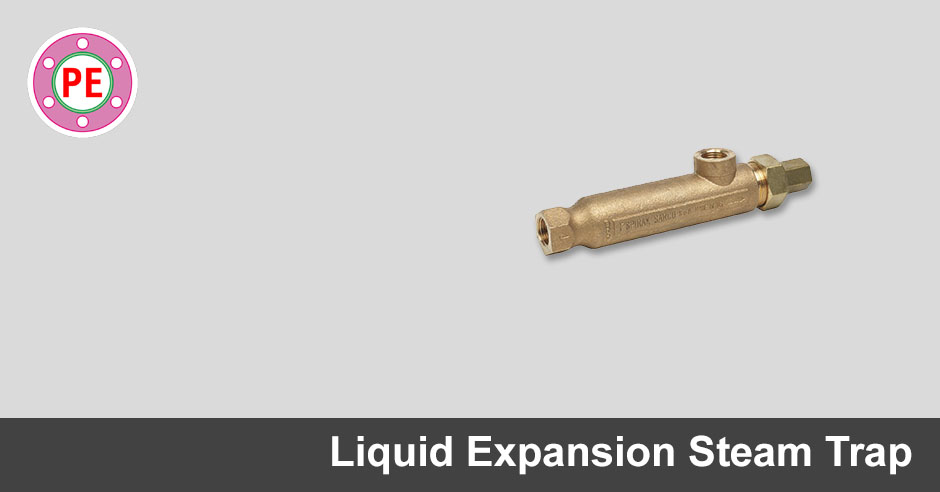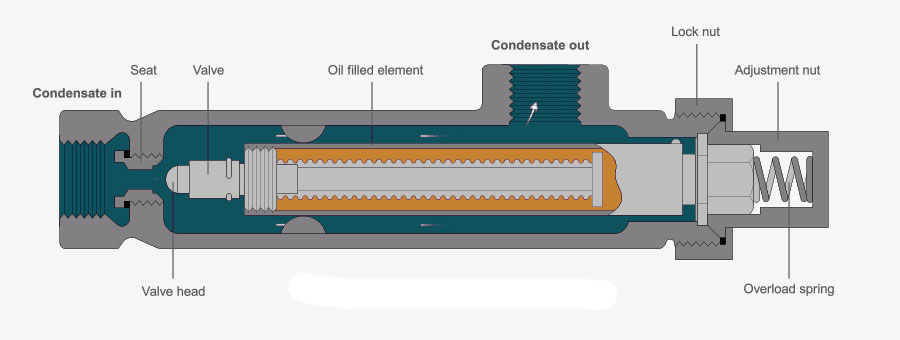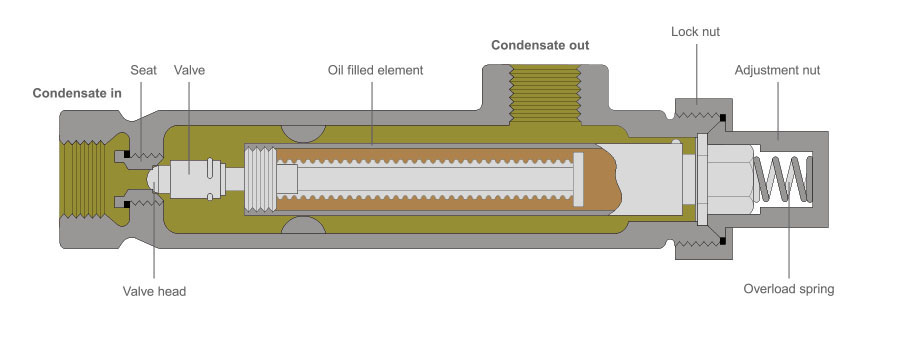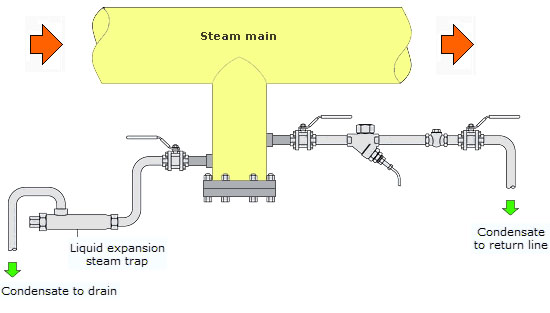This article on Liquid Expansion Steam Trap provides information about various aspects of this steam trap such as its working principle, method of operation, typical installation in a piping system, advantages and disadvantages.

Liquid Expansion Steam Trap is a thermostatic trap which is temperature operated i.e. it used steam temperature to expand liquid inside a bellow to open or close the internal valve.
Working of Liquid Expansion Steam Trap
Liquid expansion steam trap is one of the simplest thermostatic traps. This trap consists of an oil filled element that expands when heated due to entry of steam in trap. This makes internal valve to close against the seat. The adjustment screw can be rotated to alter the temperature of trap discharge between 60°C and 100°C, which makes it ideally suited as a device to get rid of large quantities of air and cold condensate at start-up.
Liquid Expansion Steam Trap Open Position

Liquid Expansion Steam Trap Close Position

[google-square-ad]
Typical Installation of Liquid Expansion Steam Trap
Because of its fixed temperature discharge characteristic, the liquid expansion trap may be usefully employed as a ‘shutdown drain trap’. Here, its outlet must always point upwards, as illustrated in the image below, to enable continuous immersion of the oil filled element. As the trap can only discharge between 60°C – 100°C it will only normally open during start-up. It can be installed alongside a mains drain trap which would normally be piped to a condensate return line.

Advantages of Liquid Expansion Steam Traps
- Liquid expansion traps can be adjusted to discharge at low temperatures, giving an excellent ‘cold drain’ facility.
- Since the condensate discharge temperature can be manipulated, liquid expansion trap allows attaining high thermal efficiency (i.e. by utilizing the latent heat of steam as well sensible heat of condensate).
- Liquid expansion steam trap does not require protection against freezing due to low ambient temperature when connected through a free draining discharge system.
- Normally lower condensate discharge temperature eliminates concerns of flashing steam.
- Like the balanced pressure trap, the liquid expansion trap is fully open when cold, giving good air discharge and maximum condensate capacity on ‘start-up’ loads.
- The liquid expansion trap can be used as a start-up drain trap on low pressure superheated steam mains where a long cooling leg is guaranteed to flood with cooler condensate. It is able to withstand vibration and waterhammer conditions.
[google-square-ad]
Disadvantages of Liquid Expansion Steam Traps
- The flexible tubing of the element can be destroyed by corrosive condensate or superheat.
- In terms of heat transfer efficiency the above trap is a poor performer.
- The use is limited to the applications where banking of condensate can be accepted.
- It cannot self-adjust to varying steam pressure conditions.
- The bronze bellows of the thermostatic element may become corroded when handling corrosive Condensate.
- Since the liquid expansion trap discharges condensate at a temperature of 100°C or below, it should never be used on applications which demand immediate removal of condensate from the steam space.
- If the trap is to be subjected to freezing conditions the trap and its associated pipework must be well insulated.
- The liquid expansion trap is not normally a trapping solution on its own, as it usually requires another steam trap to operate in parallel.
- However, it can often be used where start-up rate is not an important consideration, such as when draining small tank heating coils.
